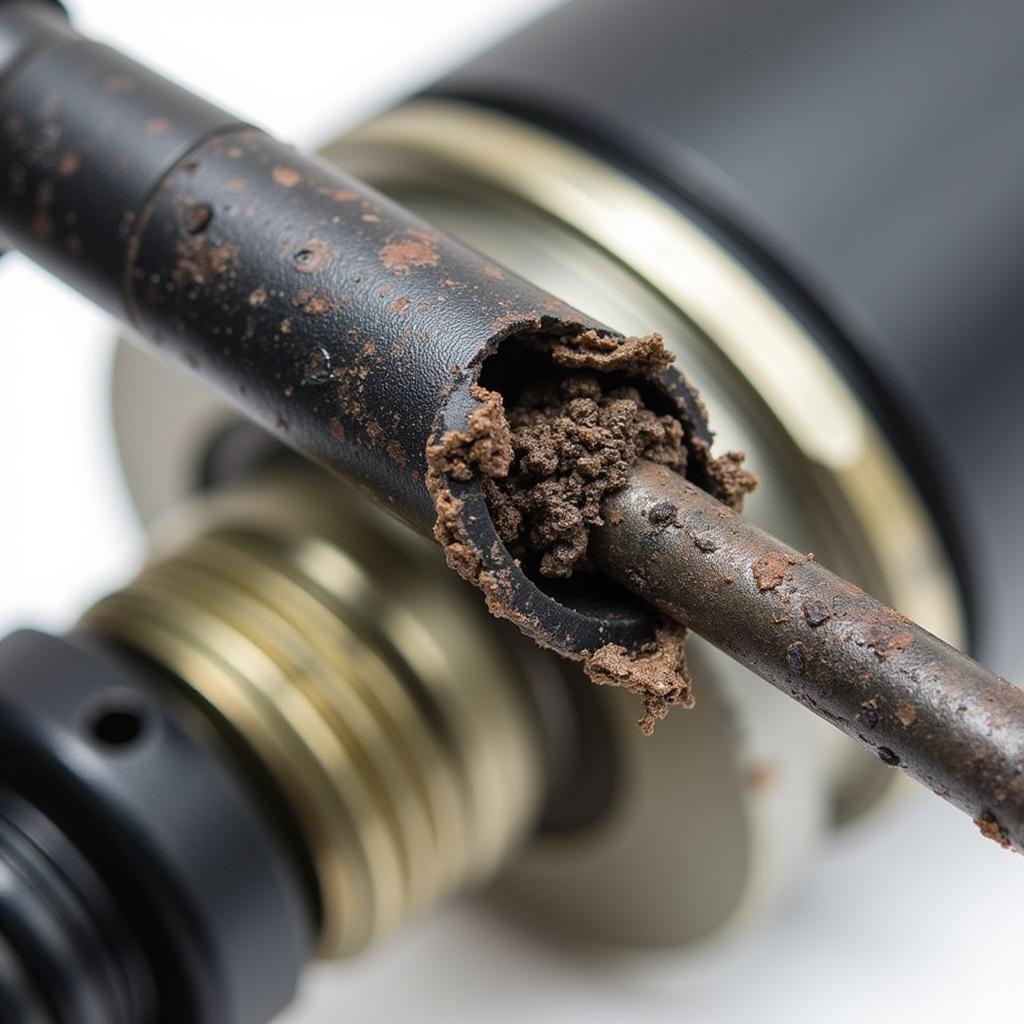The P0148 OBD2 code, indicating a problem with the oxygen sensor circuit, is a common issue faced by car owners. This code specifically points to a problem with the O2 sensor 2, bank 1, heater circuit, which monitors the exhaust gases after the catalytic converter. But what exactly causes this code to trigger, and how can you effectively address it? This comprehensive guide will delve into the intricacies of the P0148 code, exploring its potential causes, symptoms, diagnostic procedures, and possible solutions.
What Does the P0148 Code Mean?
The P0148 code signals a fault in the heating circuit of the downstream oxygen sensor. This sensor, also known as the oxygen sensor 2, plays a crucial role in monitoring the efficiency of the catalytic converter. The “bank 1” designation refers to the side of the engine where cylinder number one is located.
Unlike the upstream oxygen sensor, which directly measures the oxygen content in the exhaust gases, the downstream sensor focuses on the performance of the catalytic converter. The heater circuit within the oxygen sensor helps it reach optimal operating temperature quickly, ensuring accurate readings.
Common Causes of the P0148 Code
Several factors can contribute to the P0148 code, ranging from simple issues like a blown fuse to more complex problems with the sensor itself. Here are some of the most common culprits:
- Faulty Oxygen Sensor: A malfunctioning oxygen sensor, particularly a damaged heater circuit, is the most frequent cause. Over time, the sensor can wear out, leading to inaccurate readings or complete failure.
- Damaged Wiring or Connectors: Exposure to heat, vibration, and road debris can damage the wiring harness or connectors associated with the oxygen sensor, interrupting the electrical circuit.
- Blown Fuse: A blown fuse in the oxygen sensor heater circuit can disrupt the flow of electricity, preventing the heater from functioning correctly.
- Exhaust Leaks: Leaks in the exhaust system, especially near the oxygen sensor, can introduce fresh air and skew the sensor’s readings, triggering the P0148 code.
- Short Circuit in the Heater Circuit: A short circuit within the oxygen sensor’s heater circuit can overload the system and cause the code to appear.
Recognizing the Symptoms of a P0148 Code
While the check engine light illuminating on your dashboard is the most apparent sign of a P0148 code, other symptoms might accompany it:
- Decreased Fuel Economy: As the faulty oxygen sensor disrupts the fuel-air mixture, your vehicle might consume more fuel than usual.
- Engine Performance Issues: You might experience rough idling, hesitation during acceleration, or a general decrease in engine performance.
- Failed Emissions Test: A malfunctioning downstream oxygen sensor can directly impact your vehicle’s ability to pass emissions tests.
Diagnosing the P0148 Code
Accurately diagnosing the root cause of the P0148 code requires a systematic approach:
- Retrieve the Code: Start by connecting an OBD2 scanner to your vehicle’s diagnostic port to retrieve the stored trouble codes.
- Inspect the Wiring and Connectors: Visually inspect the wiring harness and connectors leading to the oxygen sensor for any signs of damage, corrosion, or loose connections.
- Check the Fuse: Locate and examine the fuse associated with the oxygen sensor heater circuit in your vehicle’s fuse box. Replace it if necessary.
- Test the Oxygen Sensor: Using a multimeter, check the resistance of the oxygen sensor’s heater circuit. Compare the readings with the manufacturer’s specifications to determine if the sensor is faulty.
Addressing the P0148 Code: Finding the Right Solution
The solution to the P0148 code depends entirely on the underlying cause. Here are some potential fixes:
- Replace the Oxygen Sensor: If the oxygen sensor is confirmed to be faulty, replacement is the most effective solution.
- Repair Wiring and Connectors: Repairing or replacing damaged wiring or connectors can restore the electrical circuit’s integrity.
- Replace the Fuse: Replace a blown fuse with a new one of the correct amperage rating.
- Repair Exhaust Leaks: Address any exhaust leaks to prevent false readings from the oxygen sensor.
- Consult a Mechanic: If the diagnosis proves challenging or the repairs exceed your comfort level, seek professional assistance from a qualified mechanic.
Frequently Asked Questions
Q: Can I continue driving with a P0148 code?
A: While driving short distances with a P0148 code might be possible, it’s not recommended. Prolonged driving with a faulty oxygen sensor can lead to further damage to your vehicle’s emissions system and potentially impact fuel economy and engine performance.
Q: How much does it cost to replace an oxygen sensor?
A: The cost of replacing an oxygen sensor can vary depending on the make and model of your vehicle and labor costs. On average, you can expect to pay between $100 to $400 for parts and labor.
Q: How often should I replace my oxygen sensors?
A: Oxygen sensors typically last between 60,000 to 100,000 miles. However, it’s always best to consult your vehicle’s owner’s manual for specific maintenance recommendations.
Need Further Assistance?
For more insights on OBD2 codes, including detailed guides on other common codes like obd2 code p1151, visit OBDFree.com. We offer a wealth of information and resources to empower you with the knowledge to understand and address your vehicle’s needs.
If you need personalized support, don’t hesitate to reach out to our expert team via WhatsApp: +1(641)206-8880, or email us at [email protected]. We’re available 24/7 to provide dedicated assistance and guidance for all your car diagnostic needs.
